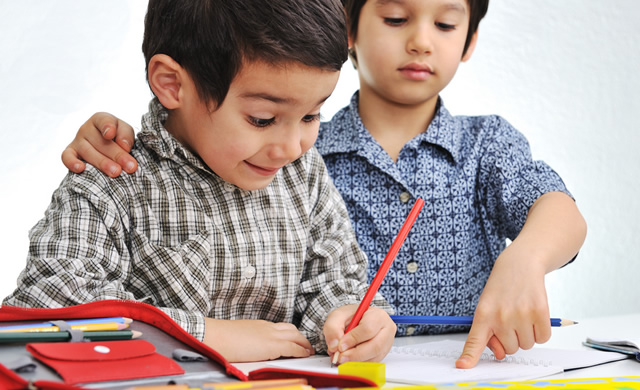
Back to School Shopping Without Breaking the Bank
05/30/2014 09:29AM | 7965 viewsIt seems like the summer is just getting going, and already it's time to start thinking about back to school. The children may still be wearing bathing suits, flip flops and sunglasses, but many families are already thinking about books, backpacks and boots. Unfortunately for many families, back to school shopping may also mean whining children and nagging parents arguing over an endless list of electronics, expensive sneakers, and the like.
Unfortunately for many families, back to school shopping may also mean whining children and nagging parents arguing over an endless list of electronics, expensive sneakers, and the like.
This year, instead of frustration, opt for cooperation from your school-aged kids. Back-to-school time is the big buying season for them, so take the opportunity to teach lessons about budgeting. Since the purchases will be for them, they have a vested interest in paying attention!
Begin by explaining the difference between needs and wants. A need is something you have to have, while a want is something optional. Uniforms, if your child's school requires them, are a need. Shoes are a need. A name-brand purse or a video game, on the other hand, is a want.
A single item might be a need and a want at the same time. If your son has outgrown his school clothes over the summer, he will need new shoes, pants, and shirts. He might want expensive versions of these items: designer brands or high-end fabrics. Your daughter may need a new backpack, but want one from one of the trendy (pricier) stores. So a pair of sneakers or a backpack could be a need and a want at the same time.
Next, explain that resources, such as money and time, are limited. There are only 24 hours in a day. An hour may be spent sleeping, working, studying, or playing. Or shopping! But the time spent on shopping is time not spent on other activities. Likewise, money is limited. Depending on the family, there may be a little or a lot of it, but it's not infinite. A dollar may be put towards a book, or some groceries, or household bills, or savings. But once it's spent on one thing, it's not available to be spent on anything else.
With this idea in mind, develop a budget. Decide how much money is available for back-to-school purchases. If your children are old enough, you may want to involve them in this part of the process. If they have jobs, you may need to hammer out how much of their own money they will contribute, and how much you will supply.
Next, draw up a lists of your children's needs and wants. Some examples:
· School shoes
· Dress shoes
· Athletic equipment
· Musical instrument
· Jeans
· Collared shirts
· Backpack
· Notebooks
· Calculator
· Laptop
Now the fun begins. Let the kids do some preliminary scouting for the items on their lists. A trip to the mall might be in order, or some internet browsing. Check out the back-to-school advertisements and coupons in newspapers and circulars. You might also want to check the classifieds for used items. Next to each item on the list, write down the best price found and where you found it. Total up the dollar amounts and compare your total with the budget you've set.
If you're lucky, the total you've estimated is under the budget you've set. More likely, however, you've "overspent" on paper. So now you've got to figure out how to trim your costs somehow.
Here's where your kids may surprise you with their adaptability and cleverness. If their hearts are set on a couple of "wants," they may be very flexible about other things. They may willingly accept hand-me-downs from older siblings or friends, be willing to talk to the coach about using donated equipment from last season, or consider renting rather than buying a musical instrument. They may opt for utilitarian, store-brand clothing if that means having enough money left over for fancy sneakers or the latest jewelry and hair accessories.
After all this preliminary work, you're ready to start shopping. As you acquire each item on the list—whether by buying new, buying used, renting, borrowing, or re-using last year's—write the actual price down next to your estimate. Keep a running tally and make adjustments as you go along. If you're overspending, you'll have to cut back someplace. If you're under budget, you've got a little more to spend on the remaining items.
Another option to consider is buying a few items before school starts to be prepared but wait until school is fully back in session to purchase some of the clothes and other apparel-related items – particularly if your children are transitioning schools (elementary to middle school for instance) – so that your children have an opportunity to determine what the latest trends are… and have some spending money already set aside for this purpose.
Don't forget to heap on the praise and encouragement for your children's hard work. If they're acting grown-up and responsible, be sure to comment on it. And notice how well they take care of their things when they've had to work and plan to get them!
Manage Spending Wisely and Incorporate the Values into Your Family’s Finances
While your family thinks about back to school budgeting and plans, consider applying those same skills on your household’s finances. To learn more or access helpful materials, speak with a local financial professional or visit www.massmutual.com/family.










Post your Comment
Please login or sign up to comment
Comments